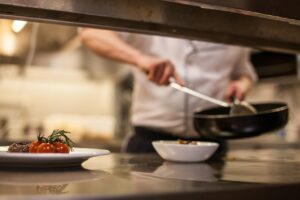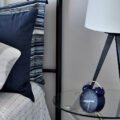 Professional kitchens need hygiene more than home kitchens: preparing many meals means, first of all, that a lot of crude foods are introduced, with their potentially pathogen microorganisms load.
Professional kitchens need hygiene more than home kitchens: preparing many meals means, first of all, that a lot of crude foods are introduced, with their potentially pathogen microorganisms load.
That is the reason why restaurant managers are required to apply HACCP (Hazard Analysis and Critical Control Points) protocols, providing standardized cleaning procedures to minimize biohazard in the kitchen critical points. HACCP applies particularly to worktables and hard surfaces, as floors, doors and walls.
To achieve a good hygiene, a good degreasing is sometimes enough: bacteria tend to develop into greasy soil. But if we would like to be surer about sanification efficacy, we may apply a specific hygienizer after degreasing. As refresher courses use to point out, when a worktable is very greasy the best thing is first clean it thoroughly with a good degreaser to be rinsed off, then apply a sanifier; on the contrary, in this case it is not recommended to clean with an all-in-one detergent-sanifier, as soil clumps may act as shelters for bacteria from hygienizing action.
Bensos suggests Universal Degreaser code MC, or also Improved Degreaser code MA, and Readyhygiene code IV to follow. Readyhygiene has an antimicrobial action but not a degreasing action: trying to clean any greasy surface with this product, it would leave diffused dirty traces.
Bensos’ products for profdessional kitchen show efficacy coupled with high biodegradability and safety from long-term toxic substances and allergens.



Leave a Reply